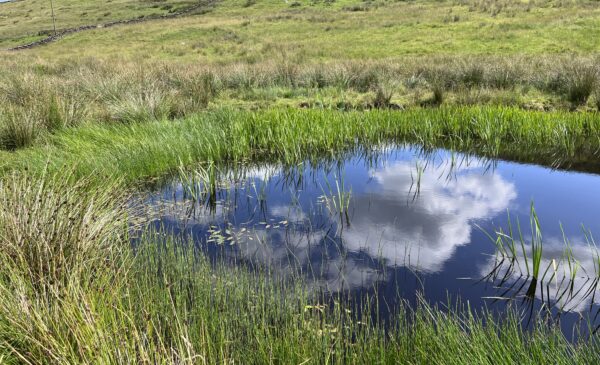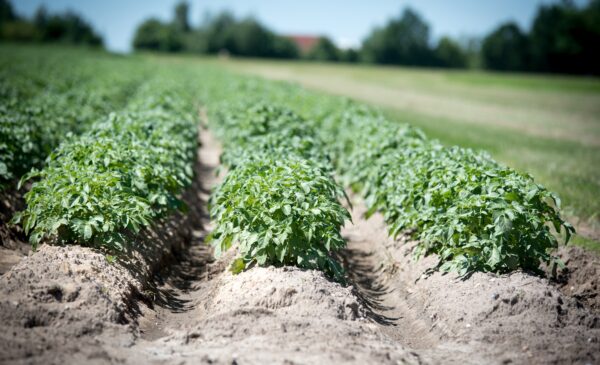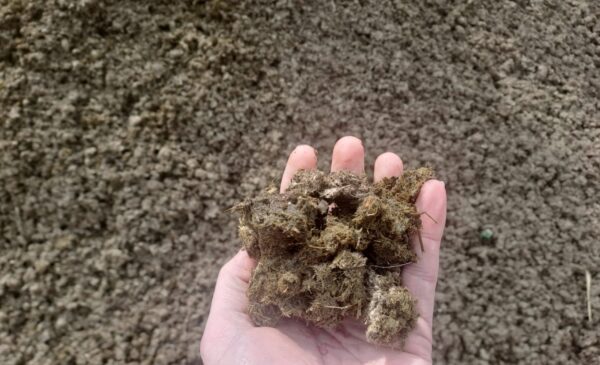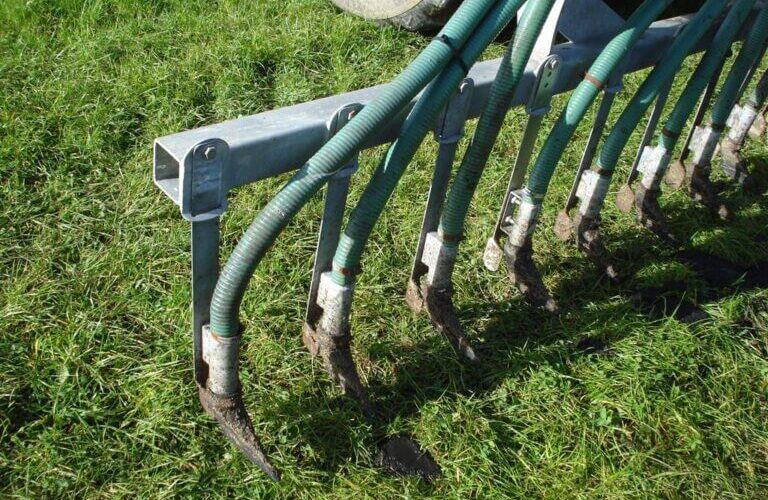Unlike carbon dioxide, nitrous oxide and methane, ammonia is not actually a greenhouse gas. So why is it so important? Ammonia presents a risk to the environment for reasons other than the greenhouse effect. These include nitrogen deposition in natural environments, which can be a threat to biodiversity, as well as reactions with sulphur dioxide, nitrogen oxides and other pollutants in the air, which form small particles that can pose a risk to human health. It is currently estimated that the agriculture industry represents 87% of the UK’s ammonia emissions.
Sources of Ammonia in Agriculture:
The top four sources of ammonia in agriculture, in order of their relative contributions to total emissions, are livestock housing, manure application, fertiliser application and manure storage. Other sources also include digestate and sewage sludge applications. These sources as well as potential mitigation measures are discussed below.
Livestock Housing
On the flooring of livestock housing the surface area of the manure that is exposed to the air is high, which leads to a high rate of ammonia emissions. The three factors that affect the rate of ammonia lost are the surface area exposed, the time for which it is exposed to the air and the rate of airflow across the manure surface. Flooring that is designed for rapid drainage as well as frequent washing and scraping of surfaces into tank storage can help to reduce the level of emissions. Using a good amount of straw to soak up dung and slurry to prevent it pooling can also help to reduce the incidence of ammonia losses.
Manure Application
The use of low emission spreading equipment, is already mandatory for many farms, and will become mandatory for all remaining farms on 1st January 2027. Farms with 100 or less milking cows, 200 beef livestock units or 800 fattening pigs or sows must apply slurry using precision equipment from 1 January 2027. Both contractors and farmers, which exceed these thresholds must not use splash plates as a method of applying slurry. Low emission spreading equipment includes dribble bars, trailing shoes and shallow injection, with shallow injection having the greatest mitigation potential. As an example, the use of a trailing shoe can enable an emissions reduction of between 30 and 60% compared to broadcasting. Where manures are surface applied it is encouraged that, if possible, they are incorporated into the soil as soon as possible after application to reduce the time they are exposed to the air.
Fertiliser Application
The main ammonium containing fertilisers include urea and ammonium nitrate. In the case of urea, the compound is made by reacting ammonia with carbon dioxide and once applied this will break down again into its constituent parts releasing ammonia gas. Volatilisation losses from urea can be up to 20% of that applied and this is exacerbated by warm and dry conditions. This represents an economic loss of nitrogen from the agricultural system as well as an environmental risk. Urease inhibitors can reduce the rate of conversion of urea to ammonium N in the soil, which can subsequently slow the rate of ammonia volatilisation. Using protected urea and limiting the use of unprotected urea to times when the soils are cool and moist, or incorporating the urea after application will all help to reduce ammonia emissions.
Manure Storage
As previously mentioned, the interaction of air with manures increases ammonia losses. Therefore, restricting the access of air to manure storage can help to reduce loses and conserve nitrogen. For liquid manures this can include covers for tanks and lagoons. Rigid store covers have demonstrated the ability to reduce emissions by 80% whilst plastic sheeting has the potential to reduce emissions by 60% and floating covers by 40%*. Undisturbed cattle slurry can also form a crust which can reduce emissions by up to 50%. For solid manures, keeping the heap as compact as possible and sheeting the heap can reduce emissions and also the leaching of nitrogen by rainwater.
Summary
As agriculture is the largest source of ammonia emissions in the UK, our industry has the greatest potential to have an impact on ammonia mitigation. Mitigation measures are not just beneficial for the UK’s air quality and the natural environment but also benefit the industry economically through the conservation of valuable nitrogen in agricultural systems. Where a high nitrogen use efficiency can be achieved this can result in yield benefits and fertiliser cost savings. With a number of ammonia-saving items eligible for funding under the new Future Farming Investment Scheme (FFIS), which opens for applications on 14th July, now is a good time to review your farm’s nitrogen use efficiency and whether something can be done to retain more of your nitrogen in the right place at the right time.
Related resources

Pond creations on farms
Harry Fisher, Ecological Consultant, SAC Consulting
Everyone loves a win-win, and when it comes to land management that can benefit biodiversity…

SAOS explores potato irrigation innovations
Scottish Agricultural Organisation Society Ltd.
SAOS have teamed up with the Scottish Potato Co-operative (SPC) to investigate water resource management.…

Slurry Separators
Craig Bothwell, SAC Consulting
Slurry separators can have many benefits such as improving the utilisation of slurry, increasing your…

